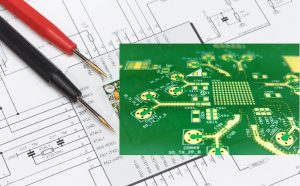
What Simulation Tools Are Commonly Used For RF PCB Design?
Commonly Used For RF PCB Design
A critical step in the RF PCB design process is to use simulation software to qualify signal behavior, and ensure it meets performance metrics. This can help reduce the amount of time spent using expensive laboratory testing at the contract manufacturer (CM) to discover problems, and eliminate rework that drives up cost.
The best RF PCB design tools enable a fast and accurate analysis of the performance of the entire circuit board layout. They can identify traces that might be overly long, resulting in increased loss and interference with other components on the board. They can also identify areas where excessive current density may cause thermal damage or even fires. These issues can be identified and resolved with simulation software, allowing a more efficient RF PCB design process and a faster path to market.
RF PCB layout simulation is essential to optimizing the design of electronic devices that require high-frequency signals. This is because these devices often need to communicate with each other over short distances, and the length of the traces plays an important role in the circuit’s overall performance. During the RF PCB layout simulation process, designers can examine many different parameters, including s-parameters, impedance and reflection coefficients, as well as voltage standing wave ratio.
These factors are used to calculate the power dissipation and transmission losses of a circuit board, which is then used to determine its performance characteristics. The result is an RF or microwave circuit that can meet all of its design goals and perform as expected.

What Simulation Tools Are Commonly Used For RF PCB Design?
There are several different types of rf pcb layout simulation software available, but the best one seamlessly integrates detailed analysis performed at the building block level with full system analysis to support a wide range of RF applications. For example, the Cadence IC physical design tool Tanner S-Edit features a user-friendly schematic capture environment that supports the most complex analog/mixed-signal designs and provides a high level of accuracy and performance. It can also handle high frequency EM/circuit/system co-simulation and enables embedded parasitic extraction, reducing the engineering effort needed to get your product to market.
Altium Designer is another top choice for RF PCB design. This tool combines powerful schematic design and PCB layout features, and includes an integrated field solver from Simberian. This allows designers to obtain ultra-accurate propagation delay and impedance calculations in one program, helping them save time and effort.
RF circuit boards are often designed by multiple engineers in different locations, and each engineer uses their own PCB design software tool. To speed up the PCB design process, the right RF design tools should be able to streamline collaboration by enabling a single data representation across platforms. Microwave Office does just that by converting Allegro PCB Designer component symbols, footprints and technology board files into an AWR process design kit (PDK). Then, it enables a layout engineer to work with these models in their preferred EM/circuit/system simulator, enabling them to improve handoff and reduce engineering effort.

No Comment